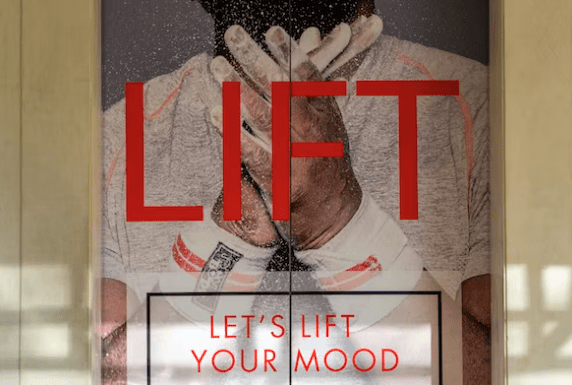
Depression is the leading cause of disability in the U.S. among individuals aged 15 to 44, with approximately two-thirds not finding adequate relief from their first antidepressant medication.
This highlights the need for alternative treatments for depression and other mental health conditions like post-traumatic stress disorder (PTSD). Transcranial magnetic stimulation (TMS) has emerged as a promising option, providing a ray of light for those seeking effective PTSD treatment.
Understanding How TMS Works to Treat PTSD
TMS is a non-invasive, non-drug treatment that uses magnetic pulses to stimulate nerve cells in the brain linked to mood regulation and depression. Employing magnetic therapy for depression to stimulate nerve cells responsible for mood regulation and depression within the brain. TMS precisely targets the dorsolateral prefrontal cortex, which tends to be overactive in depression.
The pulses help activate underactive parts of the brain to restore mood and relieve PTSD symptoms. The stimulation encourages neuroplasticity – the brain’s ability to reorganize neural pathways based on new experiences.
By activating underperforming parts of the brain, new connections are formed that improve mood and cognition over time. This allows TMS to produce lasting effects even after treatment completion.
Reviewing the Clinical Evidence for TMS in PTSD Treatment
Clinical trials validate the efficacy of TMS for treatment-resistant PTSD. In a 2018 study published in Depression & Anxiety, 68 patients underwent 5 weeks of TMS sessions. At the end of treatment, the response rate was 56% and the remission rate was 31%. After 6 months, only 20% of responders had relapsed, showcasing the durability of TMS effects.
In a meta-analysis of 10 studies, TMS remission rates exceeded 30% while response rates approached 56% for PTSD treatment. Patients report improvements in traumatization symptoms, hyperarousal, re-experiencing, and mood. The benefits can last 12 months or more for many.
How TMS Compares to Other PTSD Treatments
For decades, electroconvulsive therapy (ECT) was the gold standard treatment for severe treatment-resistant depression and PTSD. However, ECT requires anesthesia and can cause memory loss, confusion, and headaches.
TMS has fewer side effects than ECT and other options like antipsychotics or ketamine. TMS patients can drive immediately after sessions and resume normal activity aside from strenuous exercise. Mild headache is the most common side effect, reported in about a third of patients. TMS represents an advance in offering PTSD relief with minimal disruption.
Some patients may undergo TMS in conjunction with psychotherapy and medications. However, for those who have not achieved remission with other therapies, TMS monotherapy can provide significant relief of PTSD symptoms.
Comparing TMS to Traditional Treatments
When it comes to addressing PTSD, a critical consideration is the effectiveness of the treatment options available. Traditional treatments, such as psychotherapy and medication, have long been the cornerstone of PTSD management. However, TMS offers some distinct advantages and improvements that are worth exploring.
Non-Invasiveness
Traditional Treatments: Traditional treatments for PTSD often involve medications, like antidepressants, which may come with various side effects and require long-term use. Psychotherapy, while non-invasive in terms of physical procedures, can sometimes be emotionally challenging for individuals.
TMS: TMS is a non-invasive procedure, meaning it doesn’t involve surgery or the use of medications. Patients typically experience minimal discomfort during treatment sessions, making it a well-tolerated option.
Targeted Brain Stimulation
Traditional Treatments: Medications used in PTSD treatment affect the entire brain and body, potentially leading to side effects that individuals find uncomfortable.
Psychotherapy addresses the emotional aspects of PTSD but doesn’t directly target specific brain regions.
TMS: TMS is renowned for its precision. It precisely targets the dorsolateral prefrontal cortex, a region of the brain known to be involved in mood regulation and frequently overactive in individuals with depression and PTSD. By focusing on this specific area, TMS can modulate neural activity in a way that traditional treatments cannot.
Response Rates
Traditional Treatments: Response rates to traditional treatments can vary significantly among individuals. While some may experience considerable relief from their symptoms, others may not respond as effectively or at all.
TMS: Clinical trials and research studies consistently report response rates ranging from 60% to 70% for TMS in PTSD treatment. This means that a substantial majority of individuals undergoing TMS experience significant improvement in their symptoms. For those who have not responded well to traditional methods, TMS offers new hope.
Duration of Treatment
Traditional Treatments: Traditional treatments for PTSD often require long-term commitment. Medications may need to be taken indefinitely, and psychotherapy sessions can extend over several months or even years.
TMS: TMS treatment typically consists of daily sessions over a few weeks, usually ranging from 4 to 6 weeks. This relatively short treatment duration can be seen as a significant advantage, as it allows individuals to experience relief more quickly and get back to their daily lives sooner.
Examining the Safety Profile and Side Effects
TMS has an exceptional safety record, having been studied in research for over 30 years. It does not affect or involve the brain’s chemical systems like drugs or ECT. The most common side effects are mild and temporary, including:
- Headaches – usually resolve within one hour after treatment. Can be prevented with OTC medication.
- Scalp discomfort – Due to contact with the device. Subsidies as treatments continue.
- Tingling or spasming of facial muscles – Caused by the magnetic pulses and not harmful.
- Lightheadedness – Typically only in the first week and does not cause fainting.
No negative cognitive effects have been observed. TMS can safely be administered to the elderly and in pregnancy. It shows promise in treating comorbid conditions like PTSD and migraine.
A Bright Future Ahead for Advanced TMS PTSD Treatment
Ongoing research aims to further refine TMS therapy and expand its applications through:
- New stimulation patterns to enhance neural activation
- Integration with imaging and biomarkers to personalize and optimize treatment
- Novel coil configurations to target specific brain circuitry
- Combination protocols with psychotherapy to augment outcomes
- Home-based TMS under clinical supervision to improve access
With continued progress, TMS promises to offer new hope to the millions still searching for lasting relief from PTSD.
Conclusion
In conclusion, TMS therapy represents an exciting advancement in the treatment of PTSD – a condition that has not seen many innovations for several decades. With robust clinical evidence, minimal side effects, and ongoing optimizations, TMS provides new hope for those searching for lasting PTSD relief when other options have proved inadequate. For many previously stuck in the dark tunnel of treatment-resistant PTSD, TMS offers a ray of light.
Frequently Asked Questions About TMS for PTSD
1. How many TMS sessions are needed and how long does each last?
A typical course involves 30 daily sessions of 20-60 minutes each. Extended protocols of up to 36 sessions are sometimes used for severe PTSD. Maintenance sessions may be warranted after the initial treatment course.
2. Are there any conditions where TMS is unsafe?
TMS should be avoided in people with implanted devices like cochlear implants or pacemakers. It is also not recommended for those prone to seizures or with metal in the head area.
3. How does TMS differ from ECT in mechanism and side effects?
While ECT induces a seizure, TMS activates the brain via magnetic pulses without causing a seizure. ECT has more severe side effects including confusion and memory loss that aren’t seen with TMS.



